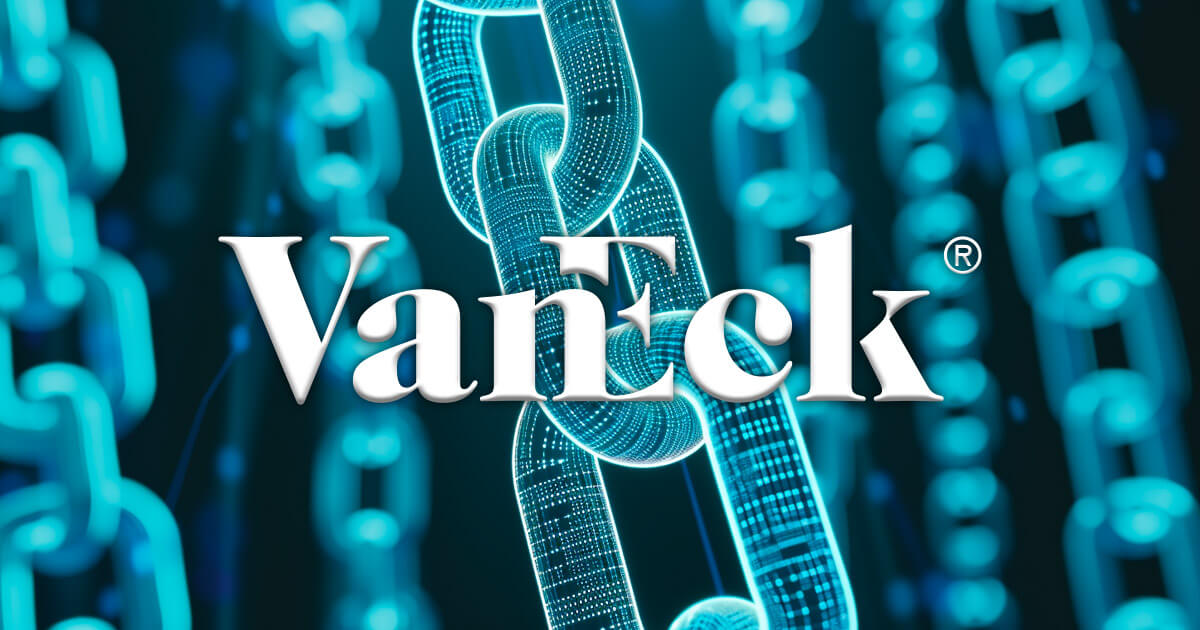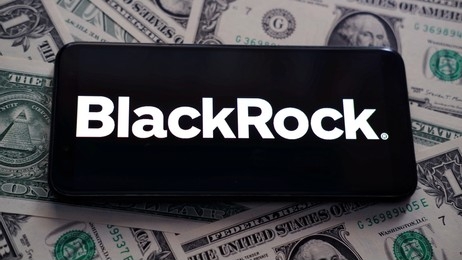Latest News
Bitcoin Gold ETF: A New Investment Opportunity | MATIC News

Traditional financial institutions are finding new ways to offer investors access to digital assets via exchange-traded funds (ETFs).
On June 27, Henry Jim, an ETF Analyst with Bloomberg Intelligence, reported on three ETF products that would provide investors access to Bitcoin, Gold, Ethereum, and MicroStrategy.
Stacked Bitcoin and Gold ETF
Tidal Investments and Quantify Chaos Advisors have jointly filed a prospectus for a new ETF offering indirect exposure to Bitcoin and Gold.
According to the filing, this ETF will leverage investments to expose investors to both assets without directly purchasing them. It will invest in Bitcoin futures, gold futures, cash, reverse purchase agreements, and other Bitcoin or Gold-related ETFs.
The ETF aims to blend Bitcoin and Gold strategies to offer complementary benefits despite the lack of correlation between these assets. It seeks to minimize short-term market fluctuations and provide stable investment opportunities.
The filing stated:
“The Fund uses leverage to ‘stack’ the total return of holdings in the Fund’s Bitcoin strategy together with the total returns of holdings in the Fund’s Gold strategy. Essentially, one dollar invested in the Fund provides approximately one dollar of exposure to the Fund’s Bitcoin strategy and approximately one dollar of exposure to the Fund’s Gold strategy.”
MicroStrategy ETF
In other Bitcoin-related ETF news, T-Rex Group, a prominent ETF issuer, has applied to the SEC for funds that will offer investors 2X Long and inverted leveraged positions to MicroStrategy.
Bloomberg’s senior ETF analyst Eric Balchunas noted that if the funds were approved, they would expose investors to about 20 times the typical volatility of the S&P 500. He stated:
“These are a near-lock to be [the] most volatile ETFs ever seen in the US, [and they] will likely be in the neighborhood of 20x the volatility of SPX. The ghost pepper of ETF hot sauce.”
MicroStrategy is the largest corporate holder of Bitcoin, amassing 214,400 BTC, equivalent to more than 1% of the top crypto asset’s total supply. The company’s executive chairman, Michael Saylor, is a vocal BTC advocate who has maintained that the firm will continue with its BTC acquisition.
Ether Option Income Strategy ETF
YieldMax also filed for an ETF that holds spot Ethereum ETFs and sells calls for income. This offers investors indirect exposure to ETH, the second-largest digital asset by market cap.
According to Jim:
“[The ETF will] invest in spot ETH ETFs, sells options on them for the premium. Will have a cap on upside of performance of the underlying Ether ETF.”
Meanwhile, the filing also clarified that the Fund does not invest directly in ETH or other digital assets. It avoids direct investment in derivatives that track ETH performance and does not seek direct exposure to the digital assets’ spot or cash price.
Mentioned in this article
Latest News
VanEck’s Matthew Sigel confirms Solana ETF is a bet on Trump victory | MATIC News

VanEck Head of Digital Assets Research Matthew Sigel confirmed speculation that the company’s Solana spot ETF proposal bets on Donald Trump winning the US presidency.
The deadline for VanEck’s application is set for March 2025, which would put it well beyond the aftermath of the US Presidential elections in November.
Sigel simply responded with a simple:
“Can confirm.”
The analysts said approval odds for each ETF are “near zero” if a Democrat victory leaves Joe Biden in office and “better … but not guaranteed” if Trump wins the election. Trump would likely appoint a new SEC chair to replace the agency’s current chair, Gary Gensler.
Surveillance sharing
Another issue seen as a hurdle to potential Solana ETF is the lack of a futures market on CME, which experts believe was a key factor in spot Bitcoin and Ethereum ETFs gaining the regulatory green light.
Grayscale notably argued in its case against the SEC that the surveillance sharing agreements in place for the CME Bitcoin futures were replicable for its proposed spot ETF and sufficient to detect and prevent fraudulent activities.
The firm claimed that the SEC failed to provide a reasonable explanation for treating spot Bitcoin ETFs differently from futures ETFs in terms of surveillance-sharing agreements.
The case essentially revolved around whether the SEC’s demand for a surveillance sharing agreement specifically for a spot Bitcoin ETF was justified and whether the SEC applied its standards consistently across different types of Bitcoin-related ETFs.
Since the SEC has now approved spot ETFs for Bitcoin and Ethereum, Sigel believes VanEck will not need to demonstrate a CME futures market around Solana to obtain its ETF. He previously stated:
“Surveillance sharing agreements with spot crypto exchanges can obviate need for CME futures.”
Bloomberg agrees SSA is enough
Bloomberg analysts agreed that an SSA “should be enough” but concluded VanEck’s approach will “only work if there’s new leadership at the SEC and/or a literal act of Congress.”
They noted that past ETF filings, particularly BlackRock’s June 2023 spot Bitcoin ETF application, included surveillance-sharing agreements (SSAs) with Coinbase, leading other firms to introduce similar clauses. However, the analysts added that the agreements ultimately proved unnecessary.
The analysts also said that the SEC’s ongoing securities lawsuits against multiple exchanges, including Coinbase and Kraken, also complicate SSAs between exchanges and ETF issuers.
Mentioned in this article
Latest News
Bahamas to provide CBDC access via commercial banks | MATIC News

The Bahamas will provide access to its central bank digital currency (CDBC) the “Sand Dollar” through commercial banks to increase adoption, Reuters reported on July 1, citing the country’s central bank governor.
Governor of the Central Bank of The Bahamas John Rolle said the country intends to establish the regulations within two years and has started signaling its intent to banks.
Rolle said:
“We foresee a process where all of the commercial banks will eventually be in that space and they will be required to provide their clients with access to the [CBDC].”
The Central Bank of the Bahamas reportedly sees the change as critical to raising CBDC and mobile payment adoption rates, even though banks will need to significantly modify their existing IT systems to comply with the upcoming obligations.
Rolle said uptake of the Sand Dollar is still limited years after its launch in 2020, requiring a shift from incentives to enforcement.
Adoption in question
Reuters described low adoption statistics amid the news. It reported that the CBDC accounts for under 1% of the country’s currency in circulation.
Reuters said wallet top-ups fell to $12 million in the eight months before August 2023 from $49.8 million in the same period in 2022, based on central bank data.
Rolle previously described “wide use, but very low average transaction value” in an interview with The New Times on June 19. He said 120,000 mobile wallets exist, equal to 20% of retail bank accounts, but mobile wallets make up less than 1% of retail payments.
Strong short-term data
A central bank press release from February described stronger short-term data. It recognized “modest seasonal growth in digital payments activities,” including the Sand Dollar, even though lower government transfer payments impacted overall year-to-date trends.
The bank said that the person-to-business (P2B) and business-to-business (B2B) transactions reached a combined $4.5 million, mainly involving the Sand Dollars, doubling from November 2022. It said personal wallet counts rose 20% year-to-date in December 2023. Sand Dollars in circulation rose 60.8% to $1.7 million.
Bahamas’ mandatory adoption policies could precede other strategies elsewhere. Reuters noted that the European Central Bank similarly intends to require retail and banks to accept and offer any future digital euro if it proceeds with one.
Latest News
Polkadot treasury holds $245M but faces revenue decline and two-year runway | MATIC News

The Polkadot Treasury holds assets equivalent to 38 million DOT, worth approximately $245 million. Head Ambassador Tommi Enenkel, popularly known as Alice and Bob, shared a new report providing the latest update on the network’s treasury.
This balance equates to about two years of the runway at its current spending rate. The report stated:
“At the current rate of spending, the Treasury has about two years of runway left, although the volatile nature of crypto-denominated treasuries makes it hard to predict with confidence.”
Polkadot’s first six months of spending
During the first six months of this year, Polkadot invested heavily in its ecosystem, spending 11 million DOT, valued at around $87 million, across various projects.
According to the report, the network invested about $37 million in Outreach activities such as advertisements, sponsorships, and events. The network signed sponsorship deals with race car driver Conor Daly and also pushed several marketing activities designed to bolster the network’s adoption by the broader global community.
Polkadot also spent $23 million developing its network features and upgrades, including SDK, Data Services and Indexing, Governance, and Subwallets.
Moreover, the network invested $15 million in liquidity incentives and $5.5 million in Talent and Education. Additionally, it spent $3.8 million to maintain the network and core ecosystem components, and another $2.1 million went towards Research.
Revenue decline
The report highlighted a decline in Polkadot’s revenue. During the first six months of the year, the network’s total earnings dropped to 171,696 DOT from 414,291 DOT, recorded in the second half of 2023.
Enenkel attributed this decline to the significant drop in network fees, which fell from 313,443 DOT last year to 39,444 DOT in the 2024 first half:
“We see that direct revenue from fees is still marginal. Polkadot made 300k DOT from fees in 2023-H2 from a short-lived inscriptions campaign. Fees under regular conditions are pretty stable with about 20k DOT per quarter. Other sources of revenue are typically transfers from accounts that return funds that they received and pay them back for various reasons.”
Disclaimer: CryptoSlate has received a grant from the Polkadot Foundation to produce content about the Polkadot ecosystem. While the Foundation supports our coverage, we maintain full editorial independence and control over the content we publish.
-

 Hot Projects4 months ago
Hot Projects4 months agoBitcoin Blasts Past $70,000 to Register New All-Time High | MATIC News
-

 Latest News4 months ago
Latest News4 months agoCourt upholds SEC’s unregistered securities claims against Gemini, Genesis’ Earn program | MATIC News
-

 Latest News2 months ago
Latest News2 months agoSix Coinbase customers claim the exchange is violating securities laws in new lawsuit | MATIC News
-
Hot Projects2 months ago
Bitcoin Will Be Set For New ATHs If It Breaks This Resistance: Analyst | MATIC News
-

 Hot Projects3 months ago
Hot Projects3 months agoBitcoin ETF Inflows Could Eclipse $1 Trillion, Predicts Bitwise CIO | MATIC News
-

 Hot Projects3 months ago
Hot Projects3 months agoOndo Finance Joins BlackRock Tokenized Fund As Inflows Surpass $160M | MATIC News
-

 Latest News4 months ago
Latest News4 months agoOver $1 billion wiped off HEX’s valuation following Richard Heart’s disparaging remarks | MATIC News
-

 Hot Projects2 months ago
Hot Projects2 months agoPEPE Whales Go On Massive 720B Shopping Spree Amid Campaign For New ATHs, Is It Time To Get In? | MATIC News



